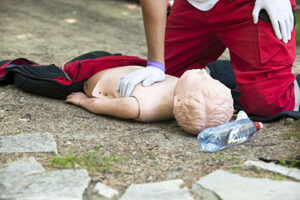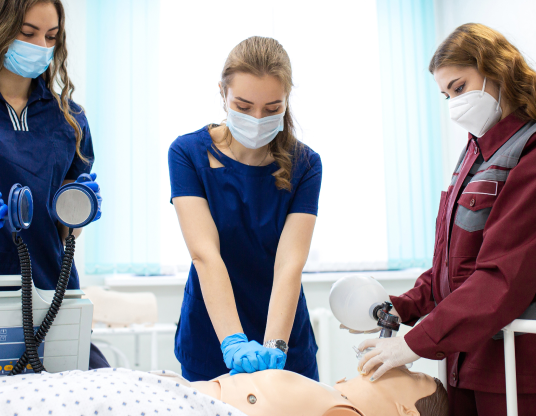Chapter 8: Child CPR
When a child’s heart stops, it’s usually because they stopped breathing first. That’s why, in a child CPR emergency, giving breaths matters just as much as compressions—maybe even more.

You’ll follow the same general steps you learned for adults: chest compressions, airway, and breathing. But there are a few important differences when it comes to kids.
- Start CPR First—Then Call 9-1-1
If you’re alone and find a child unresponsive, don’t call 9-1-1 right away. Instead, start CPR immediately.
- Do 5 full rounds of CPR (that’s 30 compressions and 2 breaths per round).
- Once you’ve done those 5 cycles, then stop and call for help.
This early CPR gives the child a better shot at recovery, especially if the issue started with breathing.
- Compressions: One Hand May Be Enough
The technique for chest compressions is almost the same as for adults, but here’s the key difference:
- Use the heel of one hand right in the center of the chest, between the nipples.
- In most cases, one hand will do. Use a second only if you really need the extra force.
- Push down at least 2 inches, fast and steady—about 100 to 120 compressions per minute.
- Let the chest rise fully between each compression.
- Airway and Breaths: No Change
Once compressions are done, open the airway with the head-tilt, chin-lift move.
- Give 2 slow breaths, about 1 second each.
- Make sure the chest rises with each one.
Everything about the breaths—timing, technique—is the same as adult CPR.
This chapter is part of your CPR Certification training. Knowing how child CPR works, and when to adjust your response, can make a huge difference when every second counts.

